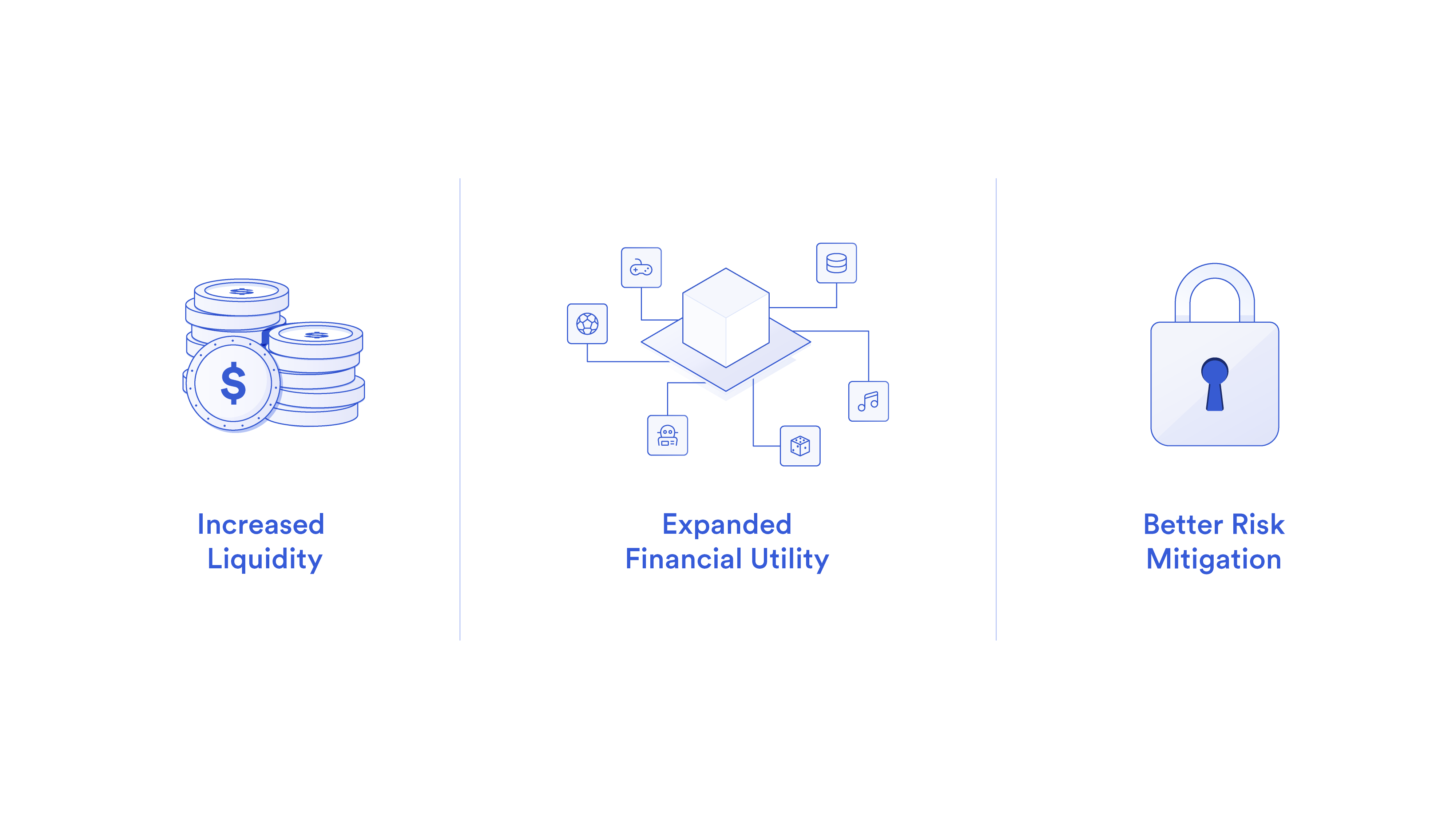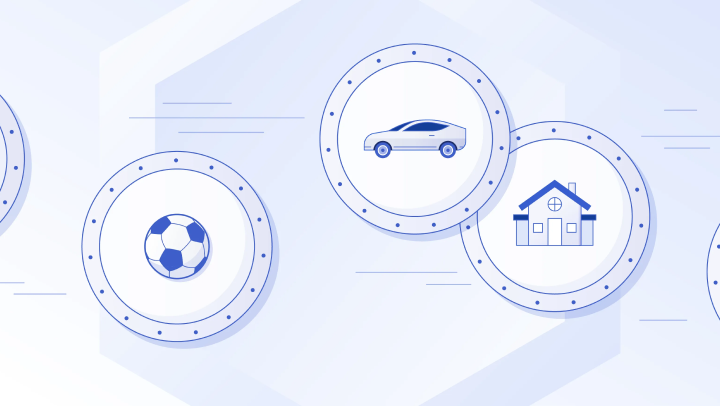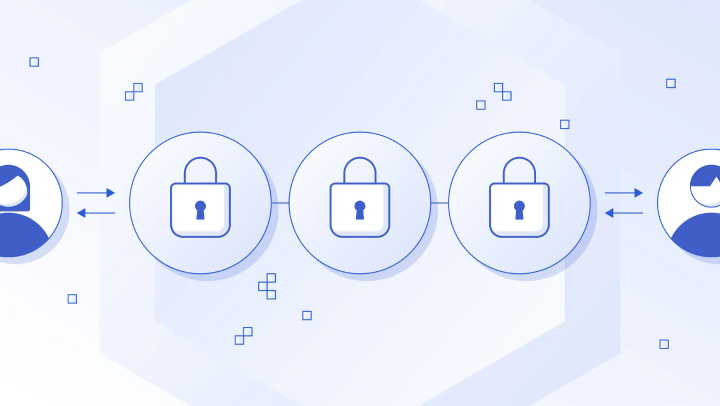What Is NFTFi?
NFTFi, or “NFT finance,” refers to the emerging ecosystem of decentralized protocols and applications providing financial utility to NFTs.
NFTFi is a rapidly growing niche that sits at the intersection between NFTs and decentralized finance (DeFi), with the ultimate goal of unlocking additional value, opportunity, and liquidity for the NFT market.
NFTFi is still nascent, and there is great potential for building innovative models for unlocking additional NFT utility.
At its core, NFTFi aims to provide decentralized financial services for NFT market participants. Outlined below are just some of the use cases that can provide novel opportunities for users to generate returns, unlock liquidity, diversify exposure, and engage with the emerging NFT finance ecosystem.
<div class="educational-divider sections-divider"></div>
What Is NFTFi?
NFTFi, or “NFT finance,” refers to the emerging ecosystem of decentralized protocols and applications providing financial utility to NFTs.
In practice, NFTFi protocols provide DeFi functionality to NFTs—unlocking the ability to rent, borrow, and fractionalize NFTs, create derivative and prediction markets around them, and more.
<div class="educational-divider sections-divider"></div>
How Does NFTFi Work?
Outlined below are the most prominent applications of NFTFi today.
NFT Lending and Borrowing
Similar to DeFi money markets such as Aave, NFTFi lending and borrowing protocols enable NFT holders to lock up their digital assets as collateral to unlock liquidity in another digital asset. Here’s how it works.

An NFT owner locks up their NFT with a protocol. The owner is then able to borrow fungible digital assets by paying interest to lenders over time, with the NFT acting as collateral in the case that the NFT owner defaults on their loan. The NFT owner can repay their loan to receive back their NFT at any time. Through this process, NFT lending and borrowing protocols offer NFT owners the ability to unlock the liquidity from their NFT without necessarily having to sell the NFT itself.
NFT Fractionalization
NFT fractionalization is the process of locking up an NFT and then minting fungible tokens that—as a whole—represent the underlying NFT.
NFT fractionalization provides novel benefits to both NFT owners and prospective buyers. By fractionalizing their NFT, owners have a unique way to sell their NFT. Rather than simply listing the entire NFT for sale on a marketplace, they can choose to sell pieces of their NFT at a lower price than the whole. This also encourages better price discovery, as fungible tokens are more liquid than their non-fungible counterparts.
NFT Indices
NFT indices are digital assets that are collateralized by NFT portfolios representing the broader NFT market. These indices can be tailored to different NFT verticals, such as profile picture collections, gaming NFTs, utility NFTs, and more.
For example, an NFTFi protocol could provide an index token that holds NFTs from the top 10 NFT collections, with portfolio weights decided by each collection’s relative market cap. This provides users with exposure to the broader NFT market. Rather than having to own an NFT from each collection to reach the same level of general market exposure, users only have to own a single index token.
NFT Prediction Markets
NFT prediction markets enable users to place predictions on the price direction of an NFT and earn revenue if their prediction is correct.
Prediction markets enable exchange-traded markets to connect financial incentives to changing NFT price data, giving users access to NFT markets without requiring NFT ownership. Prediction markets can also act as risk mitigation tools for NFT owners by helping them hedge against market volatility.
The Need for NFT Floor Price Data Feeds
A robust source of NFT price data is needed in order to implement NFTFi protocols and use cases in a secure and reliable manner.
For example, price data is needed to:
- Liquidate undercollateralized positions in NFT lending and borrowing protocols
- Provide an initial price point for fungible tokens representing a fractionalized NFT.
- Weigh and rebalance NFT index tokens collateralized by a wide variety of NFTs.
- Settle NFT prediction markets.
But NFT pricing is not a simple task. Compared to fungible tokens, NFTs are illiquid and can differ significantly in price based on each NFT’s unique characteristics. Providing applications with a robust source of NFT price data requires real-time analytics, a robust pricing methodology, and timely and reliable data delivery.
To address these challenges, Chainlink NFT Floor Price Feeds—the industry standard for NFT floor price data—combine the inherent security and reliability of decentralized oracle networks with Coinbase Cloud’s world-class pricing methodology to provide developers with the high-quality NFT floor price data they need to build secure NFT finance applications. Here’s how the feeds work.
- Coinbase Cloud scans price data across multiple prominent NFT marketplaces and filters outliers and wash trading from the data set.
- Individual data points are averaged using Coinbase Cloud’s adaptive percentile prediction algorithm to arrive at a single floor price.
- The price is securely delivered to smart contract applications through a decentralized oracle network.

<div class="educational-divider sections-divider"></div>
Benefits of NFTFi

NFTFi protocols enhance the financial utility of NFTs to provide the NFT market and its participants with increased liquidity, expanded financial utility, and better opportunities for risk mitigation.
Increased Liquidity
NFTs have traditionally been known for their unique characteristics and indivisibility, and while these are key benefits and differentiators for these one-of-one digital assets, they also limit the liquidity available in the NFT market.
NFTFi protocols enable market participants to use their NFTs as collateral for loans, trade fractionalized NFTs on decentralized exchanges, access the NFT market in novel ways through prediction markets and indices, and more. This ultimately helps create a more liquid and efficient market for these digital assets.
Expanded Financial Utility
At their core, NFTFi protocols expand the financial utility of NFTs for both owners and market participants by creating more sophisticated markets around these digital assets.
For example, lending and borrowing platforms don’t just unlock liquidity for NFT owners. The NFT owner must also pay interest on the borrowed funds, representing a novel yield opportunity for digital asset lenders. NFT fractionalization provides similarly two-sided benefits. Fractionalized tokens provide increased access to market participants due to their lower price points while enabling NFT owners to access liquidity without relinquishing complete control.
Better Risk Mitigation
Without NFTFi protocols, users have limited opportunities to gain general exposure to the NFT market or hedge against market volatility.
NFTFi protocols provide users with the ability to avoid concentrating market exposure to a single, or small range of, NFT asset(s) through use cases such as NFT indices and prediction markets. With NFT indices, users can widen their market exposure to the entire market or tailor their exposure to specific verticals. For direct owners of NFTs, prediction markets provide tools to mitigate market volatility and risk.
<div class="educational-divider sections-divider"></div>
Conclusion
NFTFi is an exciting new development for the world of non-fungible tokens. Existing projects and protocols are already offering NFT market participants a wide variety of novel opportunities to participate in the growing NFT finance ecosystem. The security, reliability, and ubiquity of the emerging NFTFi ecosystem will only grow as the NFT and DeFi ecosystems continue to mature.














